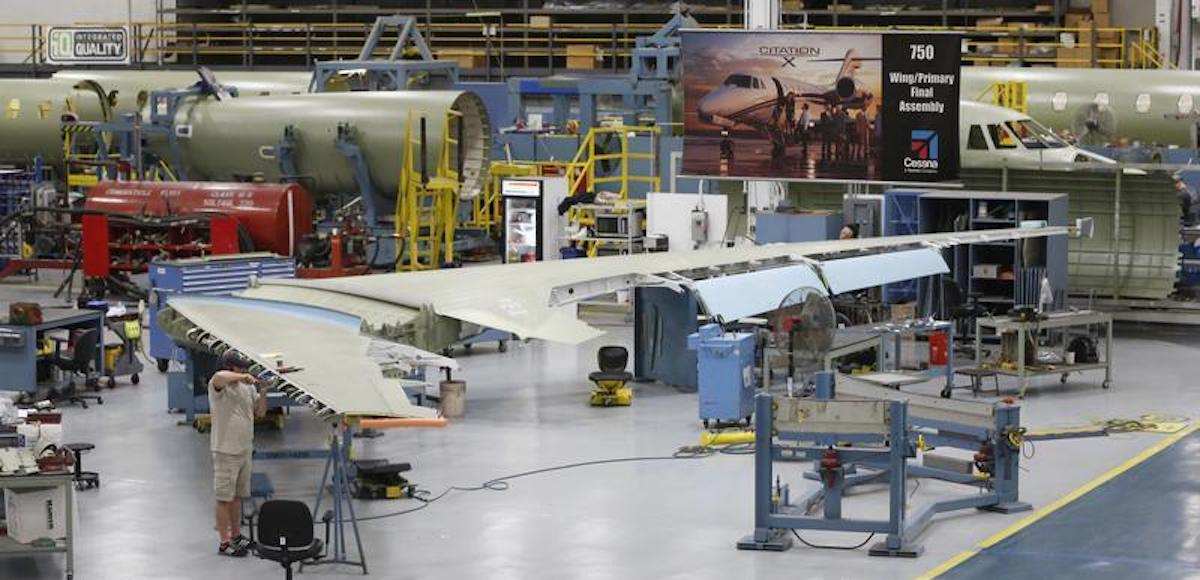

Nathan Rogers works on the jet assembly line at Cessna, at their manufacturing plant in Wichita, Kansas March 12, 2013. (Photo: Reuters)
The Commerce Department reported Thursday U.S. durable goods orders increased 6.5%, nearly doubling economists’ expectations for 3.5% in June. New orders for long-lasting manufactured durable goods increased $14.9 billion to $245.6 billion, fueled by orders for civilian aircraft.
The increase this month follows two consecutive monthly declines, including a revised 0.1% decline in May. This is the strongest gain in nearly 3 years and May was initially reported as a 1.1% decline.
Excluding transportation, new orders for durable goods gained 0.2%. Excluding defense, new orders increased 6.7%. Transportation equipment, skyrocketing 19% from $14.6 billion to $91.6 billion, led the gains after two consecutive months of declines.
Shipments of manufactured durable goods were down during 3 of the last 4 months, decreasing $0.1 billion to $236.0 billion. In May, they rose 1.2%. Transportation equipment, down 5 of the last 6 months, largely fueled the decline, $0.4 billion or 0.6% to $78.8 billion.
Unfilled orders have been up 3 of the last 4 months, increased 1.3% in June, up $14.2 billion to $1,135.6 billion. This followed a 0.1% May decrease. Transportation equipment, also up 3 of the last 4 months, largely fueled the increase, rising $12.8 billion (1.7%) to $776.8 billion.
Inventories have been up 11 of the last 12 months including a 0.1% gain in May. They were up $1.6 billion, or 0.4% to $397.0 billion in June. Machinery, up 7 of the last 8 months, led the increase in inventories in this report, rising $0.8 billion (1.2%) to $68.3 billion.
The most damning journalistic sin committed by the media during the era of Russia collusion…
The first ecological study finds mask mandates were not effective at slowing the spread of…
On "What Are the Odds?" Monday, Robert Barnes and Rich Baris note how big tech…
On "What Are the Odds?" Monday, Robert Barnes and Rich Baris discuss why America First…
Personal income fell $1,516.6 billion (7.1%) in February, roughly the consensus forecast, while consumer spending…
Research finds those previously infected by or vaccinated against SARS-CoV-2 are not at risk of…
This website uses cookies.